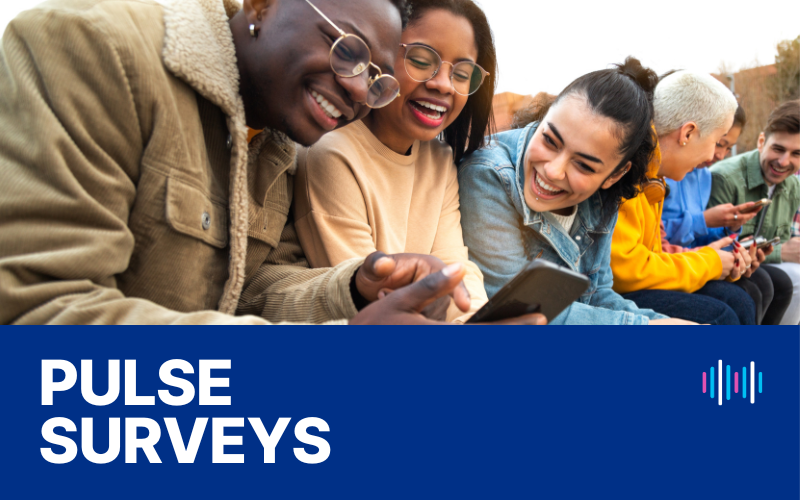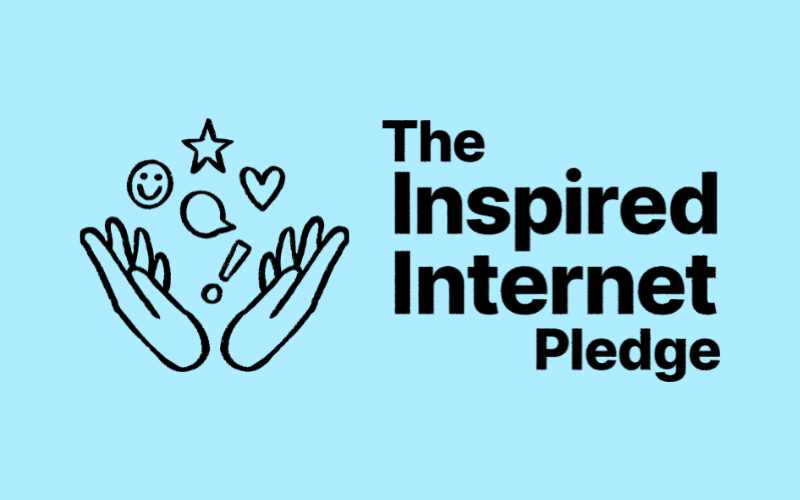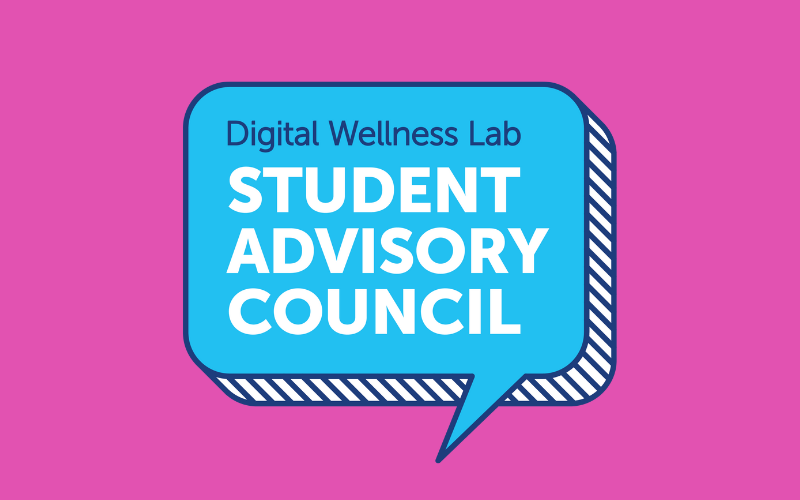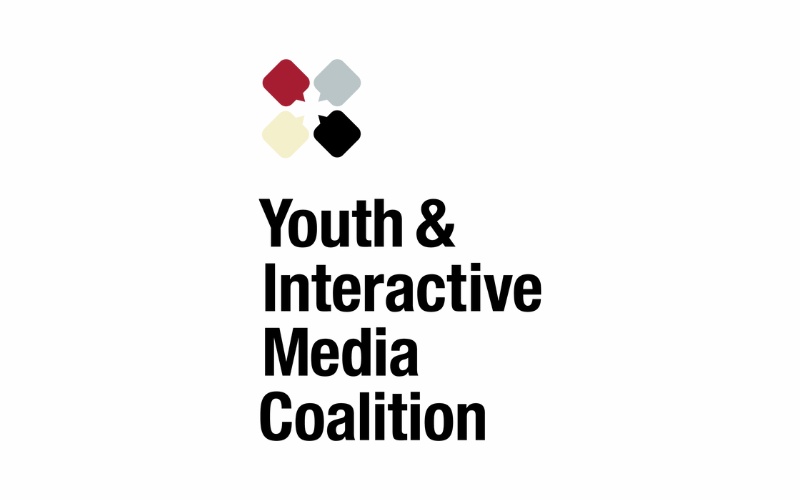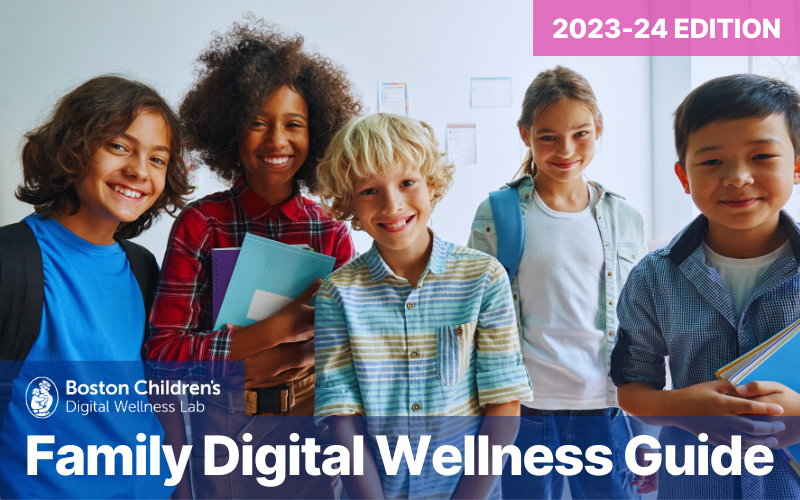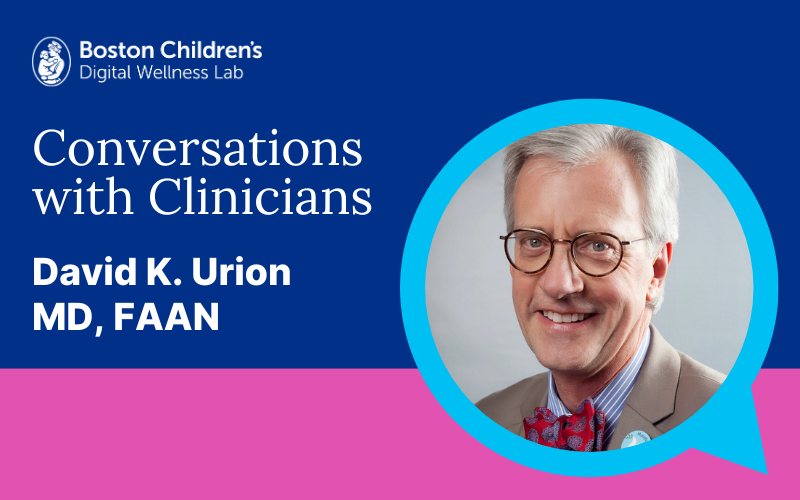David Urion, MD, FAAN
Director of Education & Director of Behavioral Neurology Clinics and Programs, Department of Neurology, Boston Children’s Hospital
Associate Professor of Neurology, Harvard Medical School
What is your role at Boston Children’s Hospital?
I am a child neurologist at Boston Children’s Hospital and serve as Director of Behavioral Neurology Clinics and Programs, where I diagnose and treat patients with various developmental disorders, and as the Director of Education for the Department of Neurology, where I work with residents and spend inpatient time on one of Boston Children’s two critical care consultation services. I’m also a Senior Associate in Ethics on the Ethics Advisory Committee.
What does a “day in the life” look like for you in your role?
When I’m working as the attending physician on the inpatient critical care consult service, I start the day by sitting down with residents to review what happened the night before. During these rounds, I look at imaging and EEGs with the residents. We then go round at the bedside of the patients we need to see. When morning rounds finish, I meet with patients’ families to check in and provide updates. There are education conferences for the residents mid-day, so I try to persuade them to hand their work off to me so they can attend. Then it’s time for afternoon rounds, during which I’ll work to help prepare the team and patients for the night. If there is a new patient, residents will call me to discuss their case. Often, I am a “fly on the wall” during patient conversations, listening to what the resident is telling the families and saying as little as possible. It should be the resident who communicates with the team and the family. Afterwards, the resident and I will speak in order to provide feedback and how that conversation went.
On outpatient days, I start the day around 7:30am-8:00am, seeing a combination of new and follow-up patients. When I’m in the office, I’ll also do administrative work, write, and attend meetings. One day a week, I supervise residents in the clinic, and most Friday mornings, I see consults in Maternal Fetal Care. A couple times a month, I’ll go over to Tufts to see neurology patients, since all the neurologists left when that hospital closed. And a couple mornings a month, I’m over at Beth-Israel to work with adults with neurodevelopmental disorders in transition.
What led you to this work?
I was a French major as an undergraduate student (writing a thesis on pre-revolutionary French theater) on a term abroad studying in France when I encountered a neurologist who was translating a diagnostic test into French from English. Somehow, I ended up helping make certain the colloquial English was translated accurately. After going on field tests with the instrument, he asked if I had ever considered going to medical school, since he thought I had “some aptitude”. It changed the direction of my life, and I ended up here at Boston Children’s.
What are the greatest opportunities you see for kids growing up in a digitally-saturated world?
My wife grew up spending summers on a small island 13 miles off the coast of Maine. I think about what it was like for kids in places like that pre-internet. The internet allows kids — even the ones who live in seemingly isolated places — to roam the world. Art, music, everything, is available instantaneously. So I think that’s one advantage, the access kids have available today.
Another thing is that back in the day you had to write, and rewrite, papers in longhand or on a typewriter. That was a painful process! Because of this, I think a lot of (instructors) pulled back and didn’t demand quite as much of their students. Now, it’s a relatively trivial activity in terms of the labor involved to ask somebody to rewrite something they’ve just done, to say, “I think paragraph three actually should be paragraph five”, without leading to screams of protest and gnashing of teeth. Because technology makes revisions so easy, people are able to hone their evaluative writing skills.
What are the greatest challenges you see for kids growing up in a digitally-saturated world?
As much as technology can improve learning, I suppose there are the dark sides of everything I just said. The instantaneous availability of information really can be very distracting, and we all spend time going down some little rabbit hole. And then that one thing leads to another, to another, and before you know it, the entire morning has evaporated into searches like that. I’m not a big user of social media myself, but certainly lots of people I know and many patients that I care for have had pretty negative experiences. Cyberbullying has become so prevalent in the population. My colleague Peter Raffalli started a cyberbullying clinic as a response to this phenomenon, and the need to help patients and families.
The times when you say, “I’m just going to look that up on the web” unfortunately does take away from, I think, the sheer pleasure of spending an afternoon in a library. Back when we actually used to look at books and to dive into the stacks and to discover, in a way that was not quite the way the internet cross-references things, there were all sorts of other riches that were embedded in that experience. And then there’s just the whole physical activity of pulling a book off the shelf and having the heft of it in your hand and the tactile and sensory experience of actually using a volume. I think that is a loss in some ways. I also think devices make it a real challenge for people, creating problems with attention and concentration, because it’s very easy to become distracted in the cyberworld and therefore not be able to develop skills of listening and contemplation and paying attention.
How would you change or design technology or media to be healthier for kids?
For me, there’s obviously a real concern about the nature of violence and content that’s related to violence, of various elements of bullying and of discrediting people on the basis of various demographic characteristics, that can promulgate itself across social media relatively easily. I think the biggest issue, though, isn’t any of those, because those are things we’re probably smart enough to figure out ways to control. For me, the biggest issue is the disinhibition I see even among highly educated and cultivated people, causing conversation to deteriorate so quickly. There are things that people will say in professional chat spaces that I know they wouldn’t say to somebody’s face if they were in a meeting.
I think people feel they have a license to speak however they want — even in the few spaces that I go into, there are academic neurologists talking like this. I’m quite certain that in a live meeting, most people would have sufficient decorum not to speak that way to a colleague, but somehow they feel empowered in cyberspace. If this is something that adults who didn’t even grow up with this technology feel empowered to do, I think it’s a real challenge for children who are growing up in a digitally saturated world. I’m not sure how I would change technology to correct for this, but the devolution of civil discourse is a real problem that needs to be addressed.
What guidance or advice do you have for parents and other caregivers to help kids to build and maintain healthy behaviors around digital media and technology?
Almost every person I know would love me to tell them that, in fact, their child should not use devices at all and take a luddite approach to digital media! Honestly, I’m deeply indebted to, and deeply influenced by, the way (the Digital Wellness Lab’s founder and director) Michael Rich has taught me to think about this.
One of the things I do is to ask families, “Do you know what sites your kids are going to? And do you ever sit down with them just to see what it’s all about?” It can really be quite illuminating for both parties to see what that’s like, to come to it with a sense of healthy curiosity and openness, as opposed to finger wagging. Because finger wagging by parents tends to not get them anywhere, ever.
Another thing I do with kids is to strategize with them directly. For example, if a pre-adolescent or an adolescent is having problems with sleep, I will have a conversation with them about going on a screen diet for a certain period of time and then to come back and report to me honestly what they’re noticing about their sleep. The idea is to create a covenant, if you will, between the two of us — I try not to have the parents involved as enforcers. It is also a door into sort of saying, “So, what other parts of your media diet are you finding troublesome?”
Anything else you’d like to share?
The virtual world, in general, has been a huge boon in terms of seeing patients. Now that we’re transitioning back to seeing people in person, there is a whole swath of families who have children on the autism spectrum that never, ever want to set foot inside the outpatient building again. Walking through an overstimulating lobby like the one here with kinetic sculptures and all sorts of people and noises is hard for those kids. Also, they don’t have to drive two and a half hours in a car, which is a really intolerable experience for all parties. Online visits are not as good as a house call, which I still do, but being able to see kids in their home environment can tell me a lot about their home life — it is much harder for me to gain this understanding when they come into my office. I don’t know anybody who sees children in this particular category of patient that hasn’t made these same observations, we all have similar anecdotes. This hasn’t been particularly studied that I’m aware of, but I think it would be interesting.
Here at the Lab, we welcome different viewpoints and perspectives. However, the opinions and ideas expressed here do not necessarily represent the views, research, or recommendations of the Digital Wellness Lab, Boston Children’s Hospital, or affiliates.

